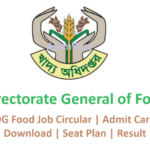Email marketing is a digital marketing strategy that involves sending targeted emails to a group of subscribers with the goal of promoting products, services, or content, and building relationships with customers. It is a highly effective and cost-efficient way to connect with your audience, nurture leads, and drive conversions.
Email marketing allows businesses to communicate directly with their audience, delivering personalized and relevant content right to their inbox. It enables businesses to establish and maintain a relationship with their customers, keeping them engaged and informed about updates, promotions, and news.
Benefits of Email Marketing:
Increased Engagement: Email marketing allows businesses to deliver tailored content to their audience, resulting in higher engagement rates. Subscribers who have opted-in to receive emails are more likely to open, read, and take action on the content they receive, leading to increased clicks, conversions, and customer loyalty.
Targeted Messaging: Email marketing enables businesses to segment their audience based on various criteria such as demographics, preferences, behaviors, and past purchase history. This allows for highly targeted messaging, ensuring that the right content reaches the right people at the right time, resulting in higher relevance and effectiveness of the email campaigns.
Cost-effective: Compared to traditional forms of marketing, email marketing is relatively inexpensive. There are many affordable email marketing service providers available that offer a wide range of features and capabilities to businesses of all sizes. This makes it a cost-effective option for businesses to reach their audience and achieve a high return on investment (ROI).
Automation and Personalization: Email marketing allows for automation of campaigns, making it efficient and time-saving. Businesses can set up automated email workflows that trigger based on specific actions or events, such as welcome emails, abandoned cart reminders, or re-engagement campaigns. This enables businesses to deliver personalized content and offers to their audience, resulting in better customer experiences and increased conversions.
Measurable Results: Email marketing provides businesses with robust analytics and reporting capabilities, allowing them to measure the performance of their campaigns. This includes metrics such as open rates, click-through rates, conversion rates, and more. By analyzing these metrics, businesses can gain insights into the effectiveness of their email campaigns and make data-driven decisions to optimize their strategies for better results.
Best Practices for Email Marketing
Email marketing can be a highly effective digital marketing strategy when done correctly. Here are some best practices to ensure you get the most out of your email campaigns:
Building a Quality Email List: Focus on building a quality email list of subscribers who have explicitly given you permission to send them emails. Avoid purchasing or renting email lists, as this can result in low engagement rates and damage your reputation as a sender. Use opt-in methods such as sign-up forms on your website, social media campaigns, or events to grow your email list organically.
Personalization and Segmentation: Personalize your emails to make them relevant and engaging for your subscribers. Use dynamic content and merge tags to personalize the email subject lines, greetings, and content based on the recipient’s name, location, past purchase history, or other relevant data. Also, segment your email list based on various criteria such as demographics, preferences, behaviors, or engagement level. This allows for targeted messaging and ensures that the right content reaches the right people at the right time, resulting in higher engagement and conversions.
Compelling Content: Create compelling and valuable content that resonates with your audience. Your emails should provide relevant and interesting information, solve a problem, or offer exclusive promotions or discounts. Use a compelling subject line that grabs attention and encourages subscribers to open the email. Keep your email copy concise, scannable, and easy to read. Use visuals such as images or videos to enhance the content and make it more engaging.
Call-to-Action (CTA): Include a clear and prominent call-to-action (CTA) in your emails that encourages subscribers to take the desired action, such as making a purchase, signing up for a webinar, or downloading a resource. Use action-oriented language and make your CTA stand out visually with buttons or hyperlinks. Test different CTAs to see which ones resonate best with your audience and drive higher click-through rates.
Mobile Optimization: With the increasing use of mobile devices, it’s crucial to optimize your emails for mobile viewing. Make sure your emails are mobile-responsive, meaning they are easy to read and navigate on different mobile devices, and images or buttons are sized appropriately for mobile screens. Test your emails on various mobile devices to ensure they render correctly and provide a seamless experience for mobile users.
Testing and Optimization: Continuously test and optimize your email campaigns to improve their performance. A/B test different elements such as subject lines, email copy, visuals, CTAs, and timing to identify what works best for your audience. Analyze the results and make data-driven decisions to optimize your strategies for better engagement, conversions, and ROI.
Email Deliverability: Pay attention to email deliverability best practices to ensure that your emails land in the inbox and not in the spam folder. Use a reputable email service provider, authenticate your domain with DKIM and SPF, manage bounces and unsubscribes, and follow anti-spam laws such as CAN-SPAM and GDPR. Monitor your sender reputation and take necessary actions to maintain a good reputation with ISPs (Internet Service Providers).
Compliance with Legal Requirements: Ensure that your email campaigns comply with all applicable legal requirements, including anti-spam laws such as CAN-SPAM in the United States, CASL in Canada, and GDPR in the European Union. Include a clear and easy-to-find unsubscribe link in every email, honor opt-outs promptly, and keep accurate records of consent.
Email Automation: Utilize email automation to streamline your email campaigns and save time. Set up automated email workflows based on specific triggers, such as welcome emails for new subscribers, abandoned cart reminders, or re-engagement campaigns for inactive subscribers. Email automation allows for personalized and timely communication with your audience, resulting in better customer experiences and increased conversions.
Email Marketing Strategy
Developing an effective email marketing strategy involves several key steps. Here are some general guidelines to help you create a successful email marketing campaign:
Define Your Goals: Determine what you want to achieve with your email marketing efforts. This could be increasing sales, driving website traffic, building brand awareness, or promoting a specific event or product.
Build a Quality Email List: Your email list is the foundation of your email marketing strategy. Focus on building a high-quality, permission-based email list of individuals who have opted in to receive emails from you. Avoid buying email lists or adding people without their consent, as this can result in low engagement and high unsubscribe rates.
Segment Your Email List: Segment your email list based on relevant criteria such as demographics, past purchase behavior, or engagement levels. This allows you to send more targeted and personalized emails, which can result in higher open rates, click-through rates, and conversions.
Create Compelling Content: Your email content should be engaging, relevant, and valuable to your subscribers. Consider using a mix of educational, promotional, and entertaining content to keep your subscribers interested and engaged. Use concise subject lines and preview text to entice recipients to open your emails.
Optimize for Mobile: With the increasing use of mobile devices to check emails, it’s important to ensure your emails are mobile-friendly. Use responsive design, clear and legible fonts, and minimalistic layouts to ensure your emails are easy to read and navigate on mobile devices.
Test and Optimize: Continuously test and optimize your email campaigns to improve their effectiveness. Experiment with different subject lines, content formats, sending times, and calls-to-action (CTAs) to identify what resonates best with your audience. Analyze your email metrics, such as open rates, click-through rates, and conversions, to gain insights and make data-driven decisions.
Automate and Personalize: Use email automation tools to streamline your email marketing efforts and deliver personalized content based on your subscribers’ behavior and preferences. Automate welcome emails, abandoned cart reminders, birthday offers, and other triggered emails to enhance engagement and nurture relationships with your subscribers.
Maintain Compliance: Ensure that your email marketing practices comply with applicable laws and regulations, such as the CAN-SPAM Act and the General Data Protection Regulation (GDPR). Obtain proper consent from subscribers, provide easy opt-out options, and handle subscriber data securely and responsibly.
Monitor Deliverability: Keep an eye on your email deliverability to ensure that your emails are reaching your subscribers’ inboxes. Follow best practices, such as using a reputable email service provider, maintaining a clean and engaged email list, and avoiding spammy content and practices.
Continuously Improve: Regularly review and analyze your email marketing performance, learn from your successes and failures, and make adjustments to optimize your strategy. Stay updated with industry trends, best practices, and new technologies to stay ahead in the ever-evolving field of email marketing.
Remember that a successful email marketing strategy is not a one-time effort, but an ongoing process of refinement and improvement. By following these guidelines and continuously iterating based on data and insights, you can develop a strong email marketing strategy that delivers results for your business.
Best 10 email marketing service in 2023
There are numerous email marketing service providers available in the market, each with its unique features and capabilities. Here are the top 10 email marketing service providers that businesses can consider for their email marketing needs in 2023:
Mailchimp: Mailchimp is a popular email marketing service that offers a wide range of features, including automation, segmentation, A/B testing, and customizable email templates. It also integrates with various third-party platforms, making it a versatile option for businesses of all sizes.
Sendinblue: Sendinblue is an all-in-one email marketing platform that offers not only email marketing features but also SMS marketing, marketing automation, CRM, and landing page creation. It provides a user-friendly interface and advanced features like workflow automation and SMS marketing, making it a comprehensive choice for businesses.
GetResponse: GetResponse is a robust email marketing platform that offers features such as automation, landing page creation, webinars, and CRM integration. It also provides advanced analytics and A/B testing options to optimize email campaigns for better results.
ConvertKit: ConvertKit is a popular email marketing service for bloggers, content creators, and small businesses. It offers features like automation, segmenting subscribers, and customizable email templates. It also provides a simple and intuitive interface, making it easy to use for beginners.
ActiveCampaign: ActiveCampaign is a powerful email marketing automation platform that provides advanced automation features, CRM integration, and personalized messaging. It also offers features like site tracking and split automation, making it a robust option for businesses that require sophisticated automation capabilities.
Campaign Monitor: Campaign Monitor is a user-friendly email marketing platform that offers features like automation, customizable email templates, and analytics. It also provides integrations with popular third-party platforms and a drag-and-drop email builder for easy customization.
AWeber: AWeber is a popular email marketing platform that offers automation, segmentation, customizable email templates, and analytics. It also provides features like landing page creation and webinar integration, making it a comprehensive option for businesses.
MailerLite: MailerLite is an affordable email marketing service that offers features like automation, landing page creation, and A/B testing. It provides a simple and easy-to-use interface, making it suitable for small businesses and beginners.
Drip: Drip is an advanced email marketing automation platform that offers features like visual workflow builder, segmentation, and personalized messaging. It also provides integrations with popular e-commerce platforms, making it a great option for businesses with online stores.
Benchmark Email: Benchmark Email is an email marketing service that offers features like automation, customizable email templates, and A/B testing. It also provides advanced analytics and reporting options for tracking email campaign performance.
These are just some of the top email marketing service providers in 2023, and the best choice for a business may depend on its specific requirements, budget, and goals. It’s important to evaluate different options and choose a provider that aligns with the business’s needs and provides the necessary features to execute effective email marketing campaigns.












